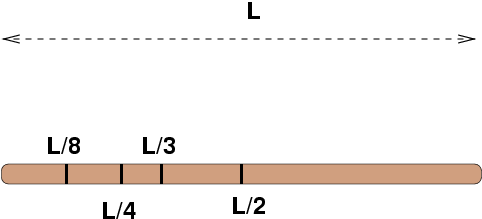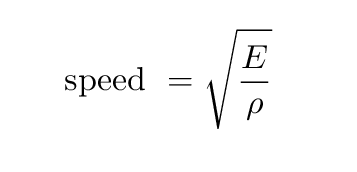Ring the rod

The speed of sound in bulk aluminum can be found in your
textbook.
However, waves travelling through a long, thin rod
will have a slightly different speed;
it is more accurately given by a formula involving
Young's Modulus:

- What is the speed of sound in bulk aluminum?
(Yes, look it up)
What is the speed given by the formula above?
Use the latter speed for the rest of the experiment.
- Set up a computer and LabPro interface.
Attach a microphone to the CH1 input.
Download this file to your desktop and double-click
it to start LabPro.
- Hold the rod at its midway point (see figure above)
and tap it gently on the floor.
Record the sound waves.
Analyze the sound waves to find their
frequency.
- Draw a picture showing the rod,
and a standing wave which can occur
when you hold the rod in the middle.
What is the wavelength of this wave?
- Using the wavelength and speed of sound,
calculate the (theoretical) freqency of this
standing wave.
Compare it to the frequency of the actual sound
wave recorded by the microphone.
Do they agree?
If you have time ...
- Repeat steps 3-5 while holding the rod
at other places: try L/4, L/8, L/3.
- Is there anything different about
the behavior of the rod when held
at L/3?


